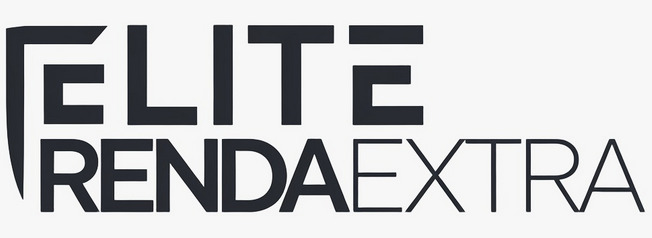Navigating the world of personal finance can often feel like a complex journey, especially when you’re looking to borrow money. Personal loans can be a valuable tool for managing various expenses, from consolidating debt to funding a significant purchase, but the key lies in securing terms that align with your financial well-being.
Understanding how to find the best personal loan rates for your needs is more than just a search; it’s about equipping yourself with knowledge. This exploration aims to shed light on the factors that influence loan rates and how you can approach the process with clarity and confidence, ensuring the choices you make support your financial goals.
Understanding Personal Loans in Depth
Before diving into the specifics of rates and terms, it’s beneficial to have a solid grasp of what personal loans entail. At its core, a personal loan is an amount of money borrowed from a financial institution, like a bank, credit union, or online lender, which you agree to pay back over a set period, typically with interest.
What Exactly is a Personal Loan?
A personal loan is generally an unsecured loan, meaning it doesn’t require you to put up collateral, such as your home or car, to secure it. This characteristic can make them accessible, but it also means lenders rely heavily on your creditworthiness to determine eligibility and interest rates. The funds from a personal loan can be used for a wide array of purposes, offering flexibility that many other types of loans do not. Lenders will provide the loan amount as a lump sum, and borrowers repay it in fixed monthly installments over an agreed-upon term, which can range from a year to several years.
Exploring Different Types of Personal Loans
While many personal loans are unsecured, there are variations to be aware of. Understanding these can help you identify which type best suits your circumstances.
- Unsecured Personal Loans: These are the most common type. Approval and interest rates are primarily based on your credit history, income, and debt-to-income ratio. Since there’s no collateral, lenders perceive these as higher risk, which can sometimes translate to slightly higher interest rates compared to secured options.
- Secured Personal Loans: These loans require you to pledge an asset (like a savings account or a vehicle) as collateral. If you default on the loan, the lender can seize the collateral to recoup their losses. Because of this reduced risk for the lender, secured personal loans may offer lower interest rates or be available to borrowers with less-than-perfect credit.
- Fixed-Rate Loans: With a fixed-rate loan, your interest rate and monthly payment remain the same throughout the loan’s term. This predictability makes budgeting easier, as you’ll always know how much you owe each month. Most personal loans come with fixed rates.
- Variable-Rate Loans: These loans have interest rates that can fluctuate over time, based on changes in a benchmark index rate. While they might start with a lower rate than fixed-rate loans, there’s a risk that your payments could increase if the index rate rises.
Common and Practical Uses for Personal Loans
The versatility of personal loans makes them suitable for a variety of financial situations. Some common applications include:
- Debt Consolidation: Combining multiple high-interest debts (like credit card balances) into a single personal loan, potentially with a lower interest rate, can simplify payments and save money on interest.
- Home Improvements: Funding renovations or repairs to your home can increase its value and livability.
- Major Purchases: For significant one-time expenses, such as appliances, electronics, or even a wedding, a personal loan can provide the necessary funds.
- Medical Expenses: Covering unexpected medical bills or planned procedures that aren’t fully covered by insurance.
- Emergency Expenses: Addressing unforeseen financial needs, like urgent car repairs or travel for family emergencies.
It’s important to use personal loans responsibly, ensuring that the purpose aligns with your long-term financial health and that you can comfortably manage the repayments.
Key Factors Influencing Personal Loan Rates
The interest rate you’re offered on a personal loan isn’t arbitrary; it’s a calculated figure based on several interconnected factors. Lenders assess these elements to determine the level of risk involved in lending to you. Understanding these can empower you to take steps that might lead to more favorable loan terms.
Your Credit Score: The Primary Driver
Your credit score is arguably the most significant factor lenders consider. It’s a numerical representation of your creditworthiness, based on your history of managing debt. A higher credit score generally indicates a lower risk to lenders, often resulting in lower interest rates and more favorable loan terms. Lenders use scores from credit bureaus (like Experian, Equifax, and TransUnion) to assess this. Factors that influence your score include your payment history, amounts owed, length of credit history, new credit, and credit mix.
Debt-to-Income Ratio (DTI)
Your DTI compares your total monthly debt payments to your gross monthly income. Lenders use this ratio to gauge your ability to manage monthly payments and repay new debt. A lower DTI suggests that you have a good balance between debt and income, making you a less risky borrower. Most lenders prefer a DTI below 43%, with some looking for even lower ratios for the best rates.
Loan Amount and Term Length
The amount of money you wish to borrow and the period over which you plan to repay it (the loan term) also affect your interest rate. Sometimes, larger loan amounts might come with slightly different rate structures. Longer loan terms can mean lower monthly payments, but they often result in paying more interest over the life of the loan. Conversely, shorter terms might have higher monthly payments but less total interest paid. Lenders may offer different rates based on the perceived risk associated with different term lengths.
Current Economic Conditions
Broader economic factors, such as the prevailing interest rate environment set by central banks and overall market conditions, can influence the rates lenders offer. When benchmark interest rates are low, personal loan rates tend to be lower as well, and vice versa. While you can’t control these macroeconomic factors, being aware of them can provide context for the rates you encounter.
Lender Specifics and Underwriting Criteria
Different financial institutions have their own underwriting criteria and risk appetite. An online lender might have a different rate structure compared to a traditional bank or a credit union. Some lenders may specialize in serving borrowers with specific credit profiles. This is why comparing offers from various sources is crucial to find the best personal loan rates for your needs.
Navigating the Search for the Best Rates
Finding the most suitable personal loan rate requires a proactive and informed approach. It’s not just about accepting the first offer you receive; it’s about understanding your needs and exploring the landscape of available options.
Defining Your Financial Needs Clearly
Before you start looking for loans, it’s essential to have a clear picture of your financial situation. Ask yourself: How much money do I truly need to borrow? Overborrowing can lead to unnecessary interest payments and a heavier debt burden. Equally important is determining what you can realistically afford in terms of monthly payments. Creating a detailed budget can help you understand your repayment capacity without straining your finances.
The Importance of Comparing Multiple Lenders
One of the most effective strategies to find competitive personal loan rates is to shop around. Interest rates, fees, and loan terms can vary significantly from one lender to another. By obtaining quotes from several lenders, you increase your chances of finding an offer that is more favorable to your situation. Don’t limit your search to just one type of lender; consider banks, credit unions, and reputable online lending platforms.
Where to Look: Banks, Credit Unions, and Online Lenders
Each type of lending institution has its potential advantages:
- Banks: Traditional banks, especially if you have an existing relationship with one, might offer competitive rates. They often provide in-person service, which some borrowers prefer.
- Credit Unions: As member-owned, non-profit organizations, credit unions often offer lower interest rates and fees compared to banks. Membership is typically required, often based on geography, employment, or other affiliations.
- Online Lenders: The digital lending space has grown rapidly, with many online lenders offering streamlined application processes and quick funding. They may also have more flexible eligibility criteria for some borrowers.
Understanding APR vs. Interest Rate
It’s vital to distinguish between the interest rate and the Annual Percentage Rate (APR). The interest rate is the cost of borrowing the principal loan amount. The APR, however, provides a broader measure of the loan’s cost because it includes the interest rate plus most fees associated with the loan, such as origination fees or closing costs. When comparing loan offers, always look at the APR for a more accurate comparison of the total cost of borrowing.
Preparing to Apply for a Personal Loan
Once you have a better understanding of your needs and where to look, the next step is to prepare for the application process. Being well-prepared can make the process smoother and potentially improve your chances of securing favorable terms.
Gathering Necessary Documentation
Lenders will require various documents to verify your identity, income, and financial stability. Common requirements include:
- Proof of identity (e.g., driver’s license, passport)
- Proof of address (e.g., utility bill, lease agreement)
- Proof of income (e.g., recent pay stubs, tax returns, bank statements)
- Details of your employment
- Information about your existing debts and assets
Having these documents ready can expedite your application.
Checking Your Credit Report and Score
Before applying, it’s wise to check your credit report from all major credit bureaus. Review it for any errors or inaccuracies that could negatively impact your score. If you find discrepancies, dispute them with the credit bureau. Knowing your credit score beforehand also gives you an idea of the types of rates you might qualify for and helps you target lenders who cater to your credit profile.
The Pre-qualification Process
Many lenders offer a pre-qualification process. This typically involves providing some basic financial information, after which the lender gives you a preliminary idea of whether you might be approved and for what potential rates and terms. Pre-qualification usually involves a “soft” credit inquiry, which does not affect your credit score. This allows you to compare potential offers from multiple lenders without negatively impacting your credit standing, helping you narrow down your choices before committing to a formal application (which usually involves a “hard” credit inquiry).
Decoding Loan Offers and Agreements
Receiving a loan offer is an important step, but it’s crucial to thoroughly understand all its components before accepting. The fine print in a loan agreement contains vital details that will affect your financial commitment for years to come.
Key Terms to Scrutinize
When you review a loan offer, pay close attention to several key terms:
- Interest Rate and APR: As discussed, understand both and ensure the APR reflects all costs.
- Loan Amount: Confirm it’s the amount you need and were approved for.
- Loan Term: The duration over which you’ll repay the loan. Consider how the term affects both monthly payments and total interest paid.
- Monthly Payment Amount: Ensure this fits comfortably within your budget.
- Prepayment Penalties: Some loans charge a fee if you pay off the loan early. If you plan to or might be able to repay ahead of schedule, look for loans without such penalties.
Recognizing Fees: Origination, Late Payment, and More
Beyond the interest rate, various fees can add to the cost of a personal loan. Origination fees are charged by some lenders for processing the loan and are often deducted from the loan proceeds, meaning you receive slightly less than the approved loan amount. Late payment fees are incurred if you miss a payment deadline. Other potential fees could include insufficient funds fees or check processing fees. Always ask for a complete fee schedule.
The Significance of the Repayment Schedule
The loan agreement will outline your repayment schedule, detailing how much of each payment goes towards principal and how much towards interest over the life of the loan. Initially, a larger portion of your payment typically covers interest. Understanding this amortization can provide clarity on how your debt is being reduced over time.
Making an Informed Decision
The final step in finding the best personal loan rates for your needs is to make a well-considered decision. This involves looking beyond just the monthly payment and considering the overall impact of the loan on your financial health.
Considering the Total Cost of the Loan
It’s easy to focus on the monthly payment, but it’s essential to calculate the total cost of the loan. This includes the principal amount borrowed plus all the interest and fees you’ll pay over the loan’s term. A loan with a lower monthly payment but a much longer term could end up costing you significantly more in interest overall compared to a loan with a slightly higher payment but a shorter term.
Thinking About Long-Term Financial Health
Consider how this loan fits into your broader financial plan. Will taking on this debt support your long-term goals, or could it hinder them? Ensure that the loan’s purpose is sound and that the repayment obligation won’t overextend your finances, potentially leading to stress or difficulty meeting other financial commitments.
When a Personal Loan Might Not Be the Best Option
While personal loans can be very useful, they are not always the optimal solution for every financial need. It’s worth considering if alternative options, such as using savings, exploring 0% APR credit card offers (for short-term needs and if you can pay it off within the promotional period), or seeking assistance programs, might be more appropriate for your specific situation. Sometimes, postponing a non-essential expense might be the most prudent financial decision.
Ultimately, the journey to secure favorable personal loan terms is one of due diligence and informed decision-making. By understanding the influencing factors, diligently comparing offers, and carefully reviewing terms, you position yourself to choose a loan that genuinely serves your financial requirements and supports your overall economic well-being without imposing undue burdens.



